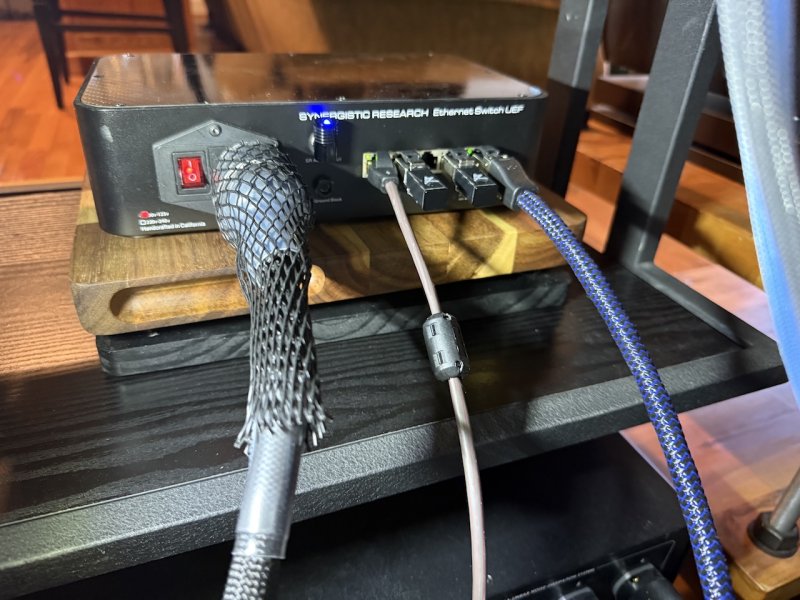No, I‘m not thinking that far ahead. This switch is still on loan to me while I wait for the new version from SR to be released. Once I get the new switch I will need time for it to settle in and I become accustomed to the sound.
My last major purchase was a year ago getting the new music server to compliment my new DAC that I bought 13 months ago. I have played records just a handful of times this past year so infatuated with the sound of digital and a universe of music compared to my paltry 1100 record albums. And then there is the efficiency advantage of digital over vinyl.
To play a streaming song the following steps must be taken:
Prestep 1. Unlock iPad using Face ID
Prestep 2. Open Roon app
1. Select song from saved albums or type in name in the search function.
2. Press play
Total time: About 6 seconds
To play a song on vinyl the following steps required are:
1. Grab flashlight
2. Peruse record albums on shelves using flashlight to be able to read album titles and find the desired album. 1-3 minutes. (Can be longer if album was not previously put back in alphabetical order.)
3. Remove album from sleeve. (In this case decision is not to use the record cleaning machine). 10 seconds
4. Use Zerostat gun, 3 pumps pointed at record center, then a fourth squeeze but hold until gun is pointed away from record to release trigger. (Specific ritual to remove static charge from record.). 20 seconds
5. Place record on turntable and install record clamp. 20 seconds.
6. Press power button on turntable and watch the Roadrunner speed readout stabilize. 30 seconds
7. Cue tonearm. 12 seconds.
8. Unmute the phono preamp. 3 seconds
9. Find your listening spot, relax to 26 minutes of beautiful music unless it is a 2 record set and then it is just 13 minutes of beautiful music. 12 seconds
10. When music is over, cue the tonearm remove flip record and repeat steps 4-9.
Total time to hear one album: 6 minutes prep time plus 26 minutes album time.
honestly, if it took me 6 minutes to play a record i would sell all my records and turntables. OTOH everyone sees things differently. but that would effectively eliminate records for ME.
when playing records it does take me about 45 seconds prior to the first record of my session, compared to 5 seconds to play my first digital streaming track. so starting the session does take more time.
1--turn on both tt's--15 seconds. CS Port is one button behind for the air, hit the on button on top for the motor, spin the platter to get it going. for the Esoteric takes one button for on, then 5 seconds later after the clock is engaged, one button for speed. total for both 15 seconds.
2--turn on the EMIA phono, press each of two power supply on buttons, 5 seconds.
3--turn on both (CS Port IME1/DS Audio Ion) Anti-static devices---10 seconds.
4---turn on the Tana/Herzan active shelf under the phono (i leave the Tana under the Esoteric always on), then engage the decoupling---5 seconds.
5---turn on the DaVa cartridge field coil power supply, and the FCL field coil arm power supply----5 seconds.
6--turn on both tt lights---5 seconds.
7---if i'm playing pressings from my long term 8000 pressing record collection, i basically can lay my hands on any of them in less than 30 seconds. even in the dim/dark. they are all cleaned and ready.
8----if i'm playing records from my more recent 2000 pressing classical addition, which were all cleaned and ready last summer (it was my summer project), i grab 4 or 6 at a time from a section and play from a stack. it might take me a minute to decide where to grab a handful, but then i have a few to play through.
my vinyl sessions will last 90 minutes to 3-4 hours, and there is very little down time. having the records cleaned and having the CS Port and DS Audio anti-static devices really removes time between records, or to start, without much compromise in noise and when the records are put away they remain clean and relatively dust free.
we all have our processes, there is no good or bad one as long as you keep listening.
















